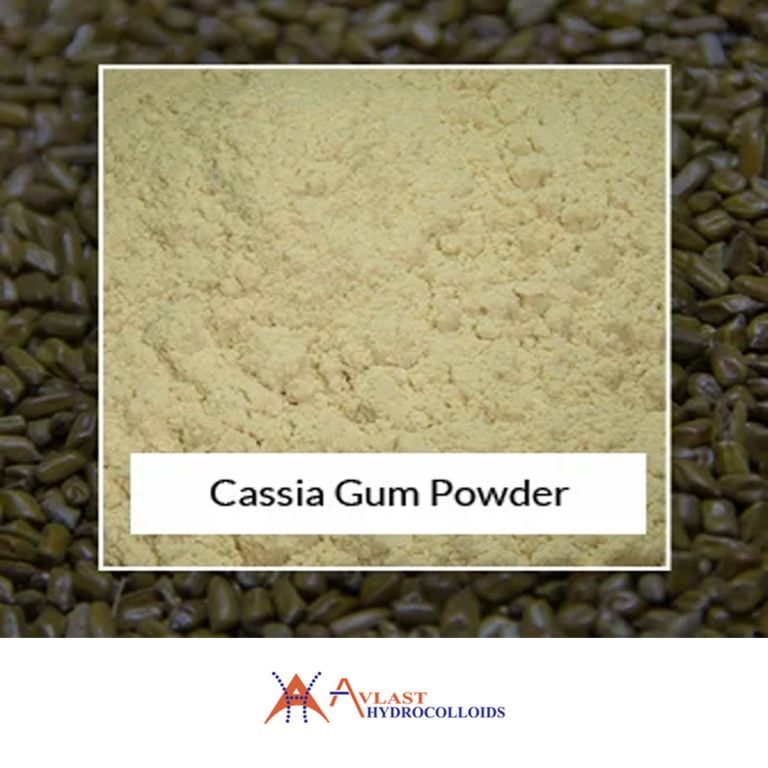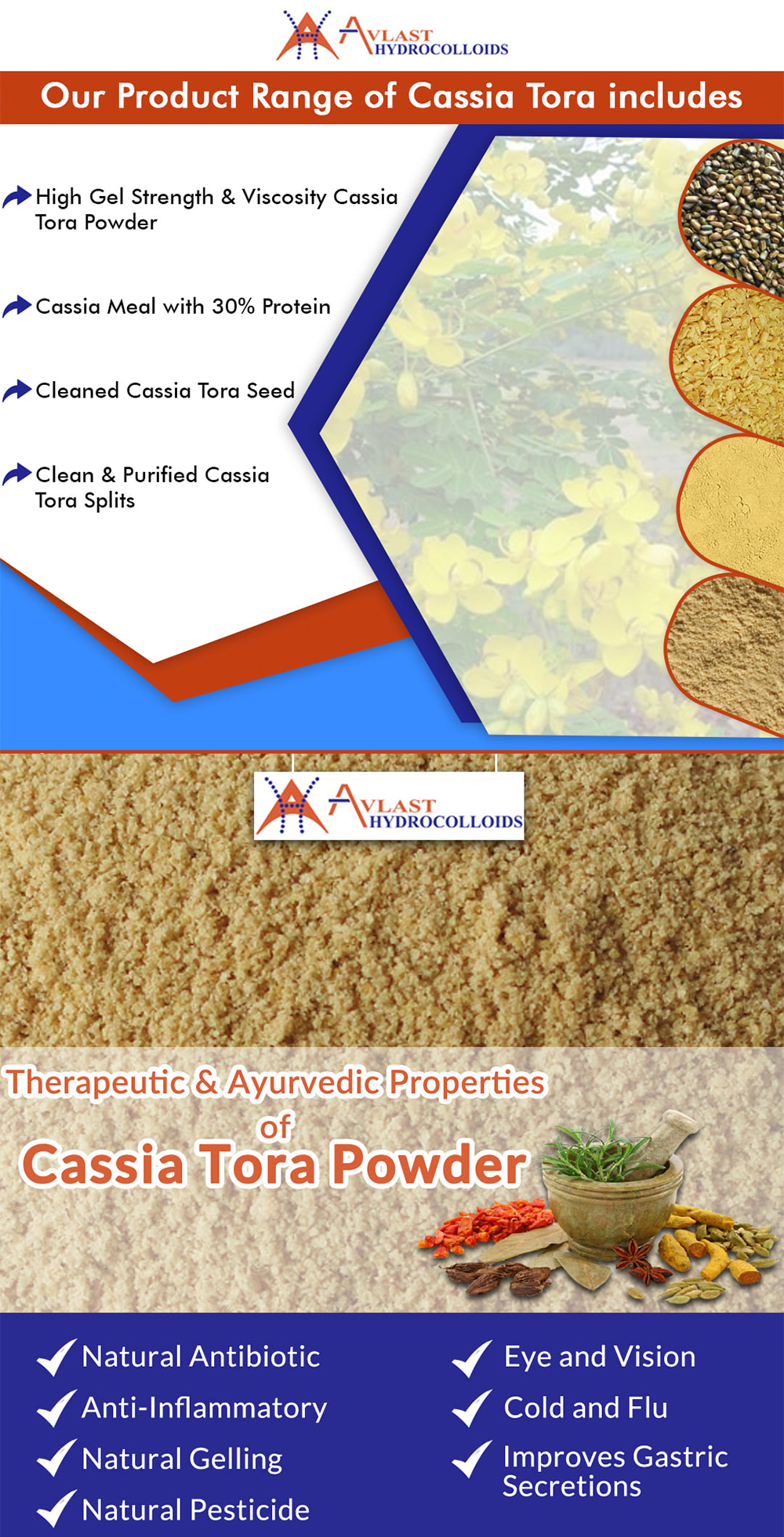The Global Market for Cassia Gum: Trends, Uses, and Safety
Introduction
Cassia gum, derived from the endosperm of the seeds of Cassia tora and Cassia obtusifolia, has gained significant traction in various industries worldwide due to its versatile properties. As one of the leading Cassia gum exporters in India, the product has received approvals and endorsements from several international regulatory bodies. This article explores the global market for Cassia gum, its applications, regulatory approvals, and safety considerations.
Regulatory Approvals and Market Acceptance
- Europe Cassia gum is approved by the Commission Directive (EEC No. E 499) and is listed in the Annex of the Council Directive (70/524/EEC) as a stabilizer, thickening, and gelling agent. This approval underscores the product’s safety and efficacy in various applications, particularly in the food industry.
- Japan has also recognized the benefits of Cassia gum, approving it as a food additive through announcement No. 160 on 10th August 1995. This approval facilitates its use in a variety of food products, enhancing their texture and stability.
- United States Cassia gum has undergone extensive evaluation by experts in toxicology, pharmacology, and food science. The findings have confirmed that Cassia gum is safe to use as a thickening agent in human and pet foods. Based on these studies, it is considered generally recognized as safe (GRAS) under its intended use conditions.

Applications of Cassia Gum
- Pet Food Industry One of the primary applications of Cassia gum is in the pet food industry. It is widely used in the manufacture of canned pet foods, particularly for cats and dogs. The gum acts as a stabilizer, thickener, and gelling agent, improving the texture and consistency of pet food products. Its ability to form stable gels makes it ideal for creating appetizing and visually appealing pet food.
- Human Food Industry In human food products, Cassia gum is used for its thickening and gelling properties. It is often added to various food items such as sauces, dressings, and dairy products to enhance their texture and stability. The use of Cassia gum helps in achieving the desired viscosity and consistency, making it a valuable ingredient in the food processing industry.
Safety and Toxicology
- Comprehensive Studies The safety of Cassia gum has been rigorously studied by panels of experts in toxicology, pharmacology, and food science. These studies have demonstrated a lack of toxic effects in animals, reinforcing its safety profile. The comprehensive review conducted in the United States serves as the basis for its GRAS status, ensuring that it is safe for consumption in both human and pet foods.
- Lack of Toxic Effects the available data on Cassia gum indicate no significant toxic effects, making it a reliable choice for use in food products. The thorough evaluation process and positive safety outcomes have played a crucial role in its widespread acceptance and approval by regulatory bodies across different regions.
Market Trends and Growth
- Increasing Demand The global market for Cassia gum is experiencing steady growth, driven by increasing demand in both the pet food and human food industries. The rising awareness about the benefits of natural and safe food additives is propelling the market forward.
- Expansion in Emerging Markets Emerging markets in Asia-Pacific, Latin America, and Africa are witnessing a surge in demand for Cassia gum. The expanding food processing industry in these regions, coupled with the growing pet ownership trend, is contributing to the increased consumption of Cassia gum.
- Technological Advancements Advancements in extraction and processing technologies are enhancing the quality and functionality of Cassia gum. Improved production methods are ensuring higher purity and better performance of the gum, thereby expanding its application scope.
Benefits of Cassia Gum
- Functional Properties Cassia gum is valued for its functional properties, including its ability to act as a stabilizer, thickener, and gelling agent. These properties make it a versatile ingredient in various food formulations, enhancing texture, stability, and shelf life.
- Natural and Safe Being a natural product, Cassia gum aligns with the growing consumer preference for clean-label ingredients. Its recognition as a safe additive by multiple regulatory bodies further reinforces its suitability for use in food products.
- Cost-Effectiveness Cassia gum offers a cost-effective solution for food manufacturers looking to improve product quality and consistency. Its effectiveness at low concentrations makes it an economical choice for large-scale food production.

Challenges and Opportunities
- Regulatory Compliance While Cassia gum has received approvals in several regions, navigating the complex regulatory landscape can be challenging for new market entrants. Ensuring compliance with local regulations is crucial for market success.
- Market Awareness Increasing market awareness about the benefits and applications of Cassia gum is essential for driving demand. Educational initiatives and marketing efforts can help in promoting the product to potential customers and industries.
- Sustainable Sourcing Sustainable sourcing of Cassia seeds is vital for maintaining a stable supply chain. Efforts to promote sustainable harvesting practices can enhance the long-term availability of Cassia gum and support environmental conservation.
Conclusion
Cassia gum has emerged as a valuable ingredient in the global food industry, thanks to its functional properties and safety profile. The approvals from regulatory bodies in Europe, Japan, and the United States have facilitated its widespread adoption in both pet food and human food products. As the demand for natural and safe food additives continues to rise, the global market for Cassia gum is poised for sustained growth. By addressing challenges related to regulatory compliance and market awareness, businesses can leverage the opportunities presented by this versatile and cost-effective ingredient.
FAQs About Cassia Gum
What is Cassia gum used for?
Cassia gum is primarily used as a stabilizer, thickening, and gelling agent in the manufacture of canned pet foods and various human food products. It enhances the texture, consistency, and stability of these products.
Is Cassia gum safe for consumption?
Yes, Cassia gum has been extensively studied and deemed safe for consumption in both human and pet foods. It is recognized as generally recognized as safe (GRAS) by regulatory bodies in the United States and has received approvals in Europe and Japan.
What are the benefits of using Cassia gum in food products?
Cassia gum offers several benefits, including improving the texture and consistency of food products, acting as a natural and safe ingredient, and providing a cost-effective solution for food manufacturers.
How is Cassia gum regulated globally?
Cassia gum is regulated by various international bodies. In Europe, it is approved by the Commission Directive (EEC No. E 499). In Japan, it is listed as a food additive through announcement No. 160. In the United States, it is considered GRAS under its intended use conditions.
What are the market trends for Cassia gum?
The global market for Cassia gum is growing due to increasing demand in the pet food and human food industries, expansion in emerging markets, and advancements in extraction and processing technologies.

